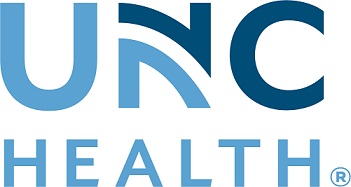Newswise — The two tests thought to be useful to screen for ovarian cancer often miss an early diagnosis, may lead to the unnecessary surgical removal of an ovary and their use should be limited only to women in high-risk groups, says Daniel Clarke-Pearson, M.D., chair of the department of obstetrics and gynecology at the University of North Carolina at Chapel Hill School of Medicine.
In a hypothetical scenario in the July 9, 2009 issue of The New England Journal of Medicine, Clarke-Pearson describes how a 56-year-old woman goes to see her primary care doctor and asks to be screened for ovarian cancer after her friend, who was 65, died of the disease.
"I would surely love to find a way to catch ovarian cancer early, and treat it and cure it, when it is easier to treat and we have better outcomes," says Clarke-Pearson, who is a specialist in gynecologic cancer care and a member of the UNC Lineberger Comprehensive Cancer Center.
"But unfortunately we still do not have a good, reliable screening test. And the ones that have been suggested have lead to a lot of false positives and a lot of unnecessary surgeries. Further, there is no evidence to date that screening would result in fewer deaths from ovarian cancer. We still have a lot of research to do."
The two screening tests are transvaginal ultrasound, which is used to detect abnormalities in the ovaries, and a blood test that detects elevated levels of a tumor marker called CA125. But the only way to confirm a diagnosis is to surgically remove one of the woman's two ovaries and test it in the laboratory.
Studies show that up to 80 percent of women have an ovary removed unnecessarily after an abnormal ultrasound, and, Clarke-Pearson says, "if we relied on the blood test we would miss the majority of early ovarian cancers " the precise group who would benefit from early detection."
"Routine screening for ovarian cancer has a long way to go before it is ready for prime time use," says David G. Mutch, M.D., chief of the Division of Gynecologic Oncology at Washington University School of Medicine in St. Louis and president of the Society of Gynecologic Oncologists.
"The groups in which it might be the most useful are the high risk groups. These groups should be the focus of our screening research efforts," Mutch said. "Dr. Clarke-Pearson's recommendation that one should not screen the general population is sound."
In the case of the hypothetical 56-year-old patient, Clarke-Pearson said, she has none of the indicators that suggest she is at risk. She has no family history of ovarian or breast cancer. She has no symptoms and the results of her physical exam, including a pelvic and rectal exam, are normal.
"So, I would advise this woman that she does not need to be screened for ovarian cancer," Clarke-Pearson said. "It's understandable that she thought it might be a good idea since her friend died from ovarian cancer, but in her case the screening is not likely to provide her any benefit. And it could lead to her having surgery that she doesn't need."
According to Clarke-Pearson, the women who should be screened for ovarian cancer are:
* women who have or have had breast cancer themselves, or have a family history of breast or ovarian cancer,
* women who have the BRCA1 or BRCA2 gene mutation (which can be detected by a blood test), and
* women who are 50 years of age or older who report having specific symptoms (pelvic or abdominal pain, urinary frequency or urgency, increased abdominal size or bloating, or difficulty eating or feeling full) more than 12 times in a month within the previous year.
MEDIA CONTACT
Register for reporter access to contact detailsCITATIONS
The New England Journal of Medicine (9-Jul-2009)
